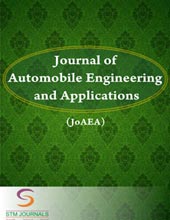[{“box”:0,”content”:”[if 992 equals=”Open Access”]n
n
Open Access
nn
n
n[/if 992]n
n
n
n
n

n
Durgesh Kulkarni, Snehal Phadol, Sarika Kothare, S.S. Lokhande
n
- n t
n
n
n[/foreach]
n
n[if 2099 not_equal=”Yes”]n
- [foreach 286] [if 1175 not_equal=””]n t
- Student, Student, Student, Professor Department of Electronics & Telecommunication, Sinhgad College of Engineering, Savitribai Phule University, Pune, Department of Electronics & Telecommunication, Sinhgad College of Engineering, Savitribai Phule University, Pune, Department of Electronics & Telecommunication, Sinhgad College of Engineering, Savitribai Phule University, Pune, Department of Electronics & Telecommunication, Sinhgad College of Engineering, Savitribai Phule University, Pune Maharashtra, Maharashtra, Maharashtra, Maharashtra India, India, India, India
n[/if 1175][/foreach]
n[/if 2099][if 2099 equals=”Yes”][/if 2099]n
Abstract
nThis abstract presents a novel approach to fire prevention and detection in electric vehicles (EVs), highlighting the challenges posed by their high-voltage battery systems. The proposed system integrates advanced fire detection technology, such as infrared sensors and thermal imaging, with automatic gas release mechanisms triggered upon fire detection to manage the temperature of the electric engine and suppress fires effectively. The chosen gas serves a dual purpose of reducing oxygen levels to suppress fires and maintaining the engine’s temperature within safe limits. While offering benefits like increased fire safety and reduced damage, challenges related to gas selection, release mechanisms, and system integration require careful consideration for ensuring overall safety and reliability. Despite these challenges, the development of such an advanced system signifies a significant advancement in enhancing the safety of EVs, emphasizing the importance of maintaining the electric engine’s required temperature during fire incidents for the future of EV safety.
n
Keywords: EV: Electric Vehicle, BMS: Battery Management System , , ECU: Electronic Control Unit, Li-ion: Lithium-ion, MQ: Methane/CH4 Quality Sensor
n[if 424 equals=”Regular Issue”][This article belongs to Journal of Automobile Engineering and Applications(joaea)]
n
n
n
n
n
nn
nn[if 992 equals=”Open Access”] Full Text PDF Download[/if 992] n[if 992 not_equal=”Open Access”]
[/if 992]n[if 992 not_equal=”Open Access”] [/if 992]nn[if 379 not_equal=””]nBrowse Figures
n
n
n[/if 379]n
References
n[if 1104 equals=””]n
- Goswami A. Bezboruah T. Sarma KC. Design of an embedded system for monitoring and controlling temperature and light. IJEER. 2009: 1(1): 27-36.2.
- YSI Incorporated. Water sampling and monitoring equipment for dissolved oxygen, PH, turbidity, temperature and level. N.p., n.d. Web; 2012 Jul. p. 1-35.
- “Fire Protection Handbook” by Arthur E. Cote and National Fire Protection Association (NFPA) – A valuable reference for all aspects of fire protection.
- Martinez-de-dios J. Merino L., Caballero F, Ollero A, Viegas D. Experimental results of automatic fire detection and monitoring with UAVs. Forest Ecology and Management. 2006 Nov; 234:1-6.6.
- Dhananjeyan S, Mohana Sundaram K, Kalaiyarasi A, Kuppusamy PG. Design and development of blind navigation system using GSM and RFID Technology. Indian Journal of Science and Technology. 2016 Jan; 9(2):1-5.
- Dalip, Kumar V. Effect of environmental parameters on GSM and GPS. Indian Journal of Science and Technology. 2014 Aug; 7(8):1183-8.8.
- Hao Q, Zhang ZJ. Two centralized energy-efficient deployment algorithms for mobile nodes in a mixed Wireless Sensor Network. Journal of Computers. 2014 Jan; 24(4):32-43.
- Khaleghi B, Khamis A. Karray FO. Multisensor data fusion: A review of the state-of-the-art. Information Fusion. 2013 Jan; 14(1):28-44.1
- Jotheeswaran J, Koteeswaran S. Feature selection using random forest method for sentiment analysis. Indian Journal of Science and Technology. 2016 Jan; 9(3):1-7.
- Ezema LS, Ani CI. Multi linear regression model for mobile location estimation in GSM Network. Indian Journal of Science and Technology. 2016 Feb; 9(6):1-6.
nn[/if 1104][if 1104 not_equal=””]n
- [foreach 1102]n t
- [if 1106 equals=””], [/if 1106][if 1106 not_equal=””],[/if 1106]
n[/foreach]
n[/if 1104]
nn
nn[if 1114 equals=”Yes”]n
n[/if 1114]
n
n

n
Journal of Automobile Engineering and Applications
n
n
n
n
n
n
| Volume | 11 | |
| [if 424 equals=”Regular Issue”]Issue[/if 424][if 424 equals=”Special Issue”]Special Issue[/if 424] [if 424 equals=”Conference”][/if 424] | 01 | |
| Received | April 25, 2024 | |
| Accepted | May 2, 2024 | |
| Published | May 24, 2024 |
n
n
n
n
n
n function myFunction2() {n var x = document.getElementById(“browsefigure”);n if (x.style.display === “block”) {n x.style.display = “none”;n }n else { x.style.display = “Block”; }n }n document.querySelector(“.prevBtn”).addEventListener(“click”, () => {n changeSlides(-1);n });n document.querySelector(“.nextBtn”).addEventListener(“click”, () => {n changeSlides(1);n });n var slideIndex = 1;n showSlides(slideIndex);n function changeSlides(n) {n showSlides((slideIndex += n));n }n function currentSlide(n) {n showSlides((slideIndex = n));n }n function showSlides(n) {n var i;n var slides = document.getElementsByClassName(“Slide”);n var dots = document.getElementsByClassName(“Navdot”);n if (n > slides.length) { slideIndex = 1; }n if (n (item.style.display = “none”));n Array.from(dots).forEach(n item => (item.className = item.className.replace(” selected”, “”))n );n slides[slideIndex – 1].style.display = “block”;n dots[slideIndex – 1].className += ” selected”;n }n”}]


